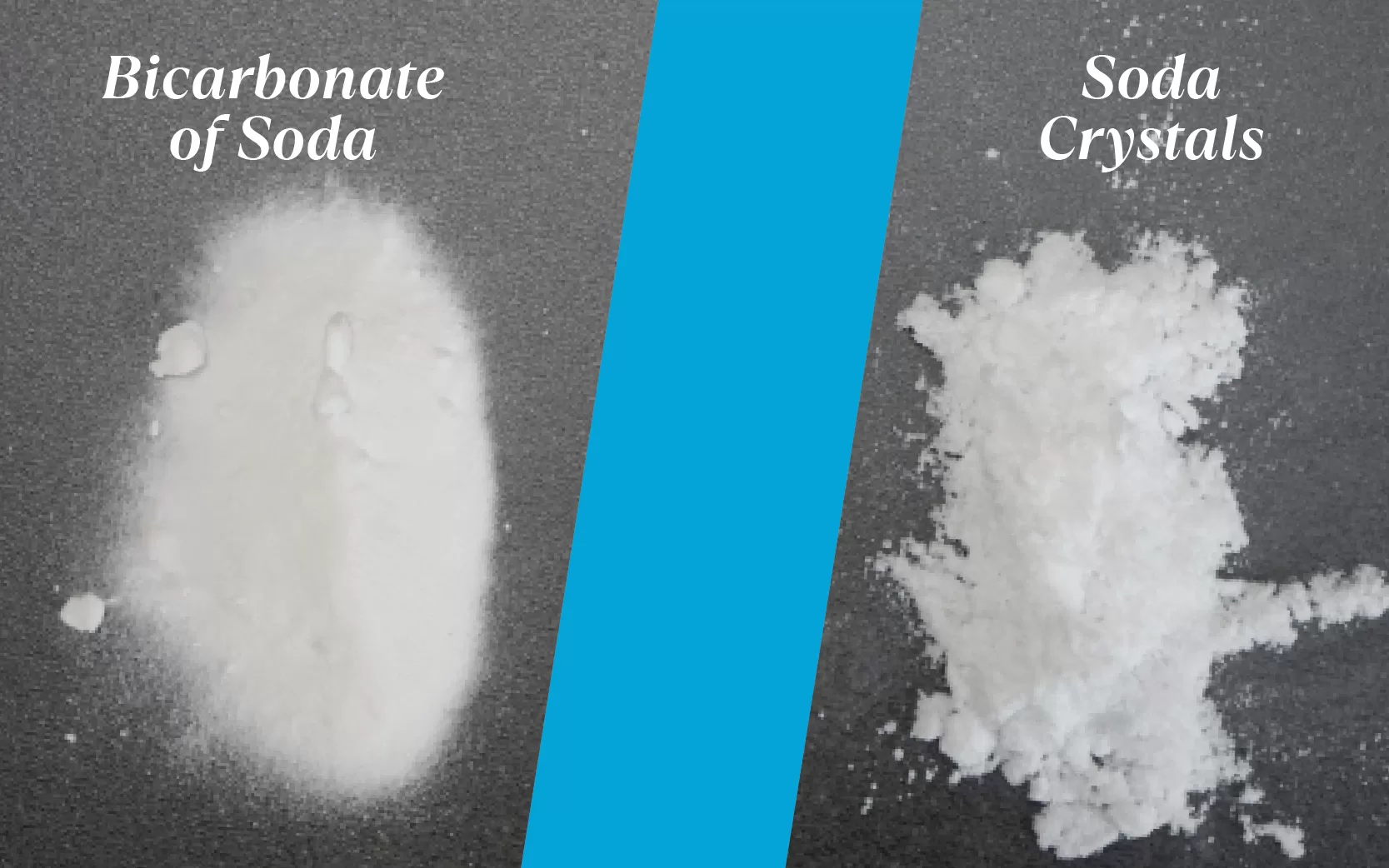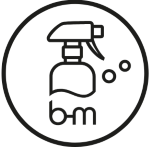Let’s untangle the mystery of Bicarbonate of Soda and Soda Crystals, two household heroes that might seem alike but have their own unique qualities.
THE DIFFERENCE BETWEEN SODA CRYSTALS AND BICARBONATE OF SODA
Soda Crystals and Bicarbonate of Soda are both fantastic for cleaning, but they do have their differences. Both are natural, non-toxic, and environmentally friendly, making them great choices for your home.

They are both types of salt, Bicarbonate of Soda makes cakes and bread dough rise and also has some medical uses, like treating heartburn and indigestion. You might also find it in some mouthwashes and toothpaste. Soda Crystals were traditionally the main product for cleaning and laundry and is used in many industries, like glass making, soap production, and textiles. However, it should never be ingested, and you’ll need to wear rubber gloves when using it for cleaning. Let’s have a look at their chemical properties to learn more.

BICARBONATE OF SODA, PH 8-9
also known as Baking Soda, Bicarb, or Bread Soda is lightly alkaline with a PH of 8-9. This fine white powder dissolves easily in water and is a gentle abrasive, making it perfect for scrubbing. It’s mild enough to be used in baking and even in toothpastes, but be careful not to inhale it, and it can also irritate your eyes.
SODA CRYSTALS, PH 11-12
also known as Washing Soda, are chemically identified as Sodium Carbonate Decahydrate and are more alkaline, with a pH of 11-12. They have larger, visible granules that dissolve more slowly, leaving a white residue if not rinsed well. As a stronger cleaner, they are perfect for tackling tough jobs but should always be handled with care and gloves to protect your skin.
Understanding the pH Factor
To really get to grips with the difference, let’s take another look at the pH scale. Both are alkalis, with Bicarbonate of Soda at a pH of 8-9 and Soda Crystals at a pH of 11-12. The higher the pH, the more alkaline and, therefore, the more powerful and aggressive a cleaner becomes. Substances at the ends of the scale are caustic, meaning they can break down organic materials or cause chemical burns.

Most of the dirt, stains and smells in our homes and laundry are caused by acidic substances, like juice, tea, red wine, coffee, and milk, so alkaline cleaners usually do the trick. They neutralize those substances, moving the pH closer to the middle again.

The big NO-NO: Mixing Acids with Alkalis
You can mix alkalis like Bicarbonate of Soda with Soda Crystals, Castile soap, and Oxygen Bleach to boost their cleaning power.
However, mixing Soda Crystals or Bicarbonate of Soda directly with acids like Vinegar or Citric Acid isn’t the best idea. It creates a neutral solution that’s not particularly effective for cleaning.
The trick is to use alkalis and acids one after the other. For example, if you’re cleaning a bathtub: First use the Soda Crystals to give it a good clean. Then use a Citric Acid solution to remove any residue and leave the tub shining.

Interesting Fact:
You can make Soda Crystals from Bicarbonate of Soda at home by baking it in the oven:
- Layer Bicarbonate of Soda on a large baking sheet.
- Bake at 200°C for 30 minutes to one hour .
- Remove the tray from the oven, and allow it to cool completely.
- Store in an air-tight container.
HOW TO USE THEM
BICARBONATE OF SODA
is great for neutralising odours, breaking down proteins and stains, and softening water to make detergents more effective. It’s gentle enough not to damage surfaces, making it ideal for delicate areas like natural stone countertops, kitchen sinks, or places frequented by children and pets. However, it might take a bit longer for results than Soda Crystals.
SODA CRYSTALS
shine when it comes to cutting through grease and grime. They’re ideal for heavy-duty cleaning tasks like removing stubborn stains, cleaning greasy ovenracks, or tackling limescale. They also work wonders in laundry as a stain remover and water softener. Soda Crystals are highly alkaline. Too much can harm surfaces, fade colours, and wear out fabrics over time. Use sparingly!

A note on Baking Powder:
To clear up any confusion, Baking Powder is a mix of Bicarbonate of Soda, an acid, and a buffer. It’s designed to help dough rise by releasing carbon dioxide, but it won’t do much for cleaning. Save it for your next batch of scones!
WHEN TO USE WHICH
Choose BICARBONATE OF SODA for
- Sturdy surfaces that are a bit trickier to rinse, such as oven floors or grout.
- Delicate surfaces that might get a scratch, like countertops.
- Areas where little ones or pets play, such as carpets or pet beds.
- Surfaces where you prepare food, like kitchen counters. Bicarbonate of Soda has just the right amount of grit for cleaning without scratching, and it rinses away easily – plus, it’s edible, so no residue worries here.
Choose SODA CRYSTALS for
- Sturdy surfaces or fabrics that are easy enough to rinse, like bathtubs or shower doors as it leaves white residue.
- Tougher cleaning tasks like baked-on pots and oven racks that can be rinsed.
- Heavily stained or dingy items that aren’t too delicate, like white cottons.
Simply put:
think of Bicarbonate of Soda as your trusty, gentle cleaner, while its big cousin Soda Crystals are the powerhouse you call in for the tough jobs.
For laundry, combining both can give you the best of both worlds—raising the water’s pH for superior cleaning while tackling stains and odours.

